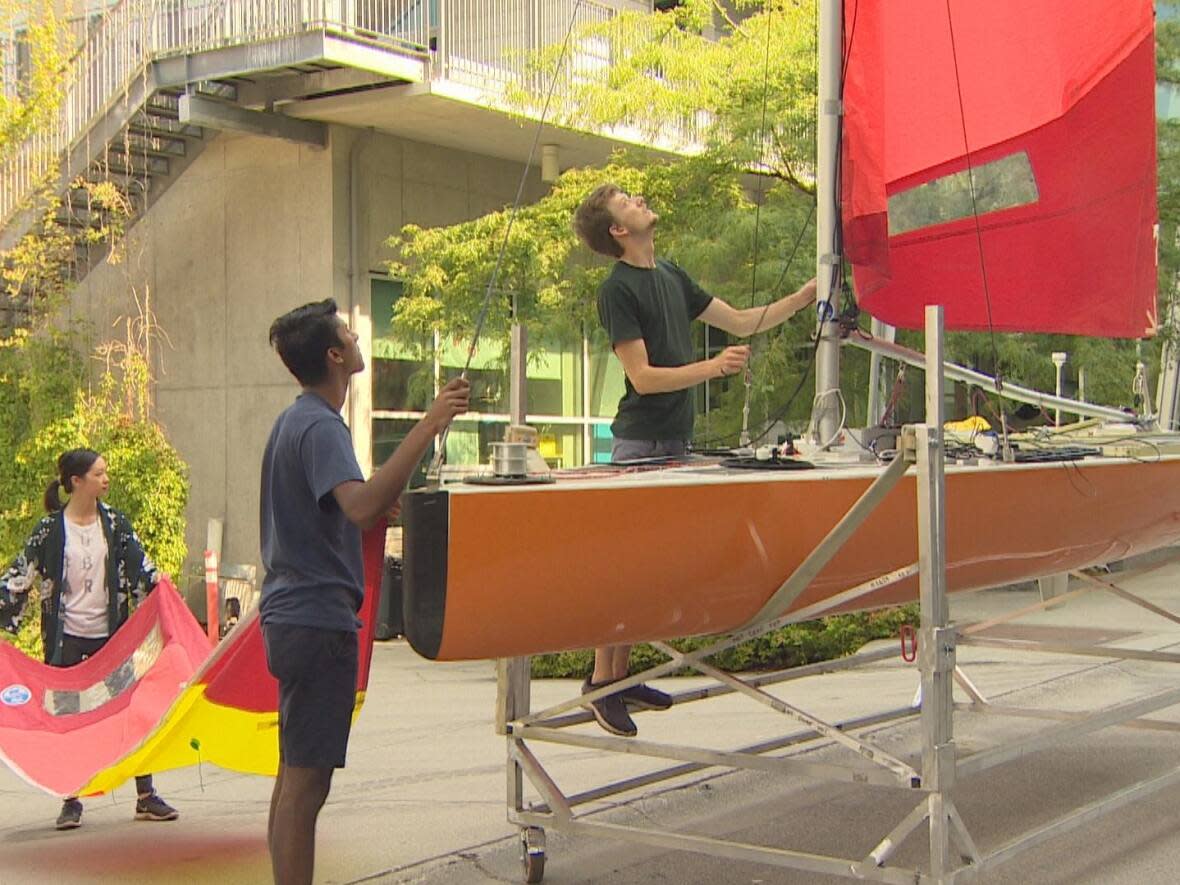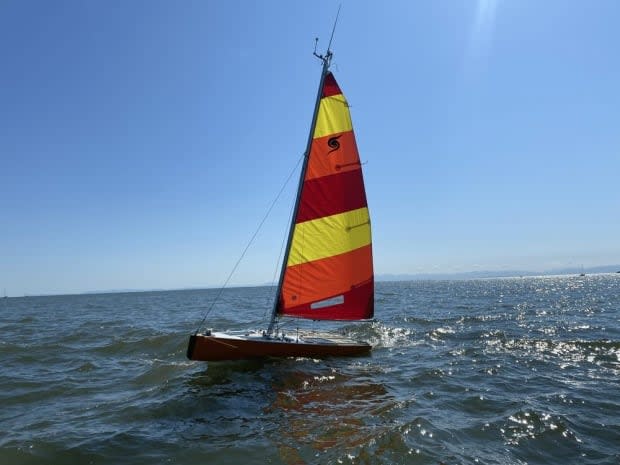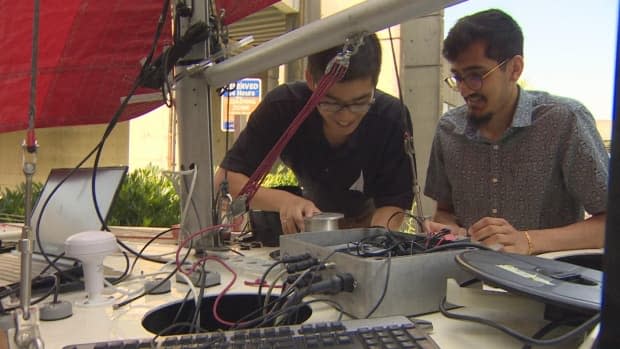UBC's new 'sailbot' nearly ready to depart for Hawaii

A team of University of B.C. engineering students are putting all hands on deck for their second attempt at an ocean crossing this month.
But once their 18-foot sailing vessel, Raye, sets course for Hawaii, it will have no hands on deck at all.
That's because it will sail the high seas autonomously, thanks to computer programming and solar power.
The so-called "sailbot" was designed entirely by students — more than 200 were involved — and took six years to build, according to the team's co-captain.
"Sailing is a sport of the feel, you look at the sail to see how full it is to adjust its angle," said UBC Sailbot's Asvin Sankaran. "Then to try to quantify that ... it's an impressive challenge.
"We really want to push the limits of engineering, and push the limits of the marine industry; autonomous technology is super 'in' right now."
The 20-foot-tall craft is scheduled to set sail from Victoria later this month. Its two sails are expected to carry it more than 2,500 km to Maui, Hawaii — with neither captain aboard nor navigators guiding it from afar.

The launch of the robotic sailboat comes nearly five years after their previous attempt ended in failure. But there were also lessons learned.
"I want to see the headline that Raye has made it to Maui," said Justin Reiher, who was involved in the team's last ocean-crossing attempt. "I think that would be a testament to … the ingenuity of the students."
'Unfinished business with a full ocean crossing'
In late 2017, Raye's predecessor, Ada — a sailboat the same length as Raye, but slightly narrower — was found floundering without its mast off the coast of Florida, a year after the team lost contact with the boat off the Azores archipelago, almost 2,500 km across the Atlantic Ocean.
Ada was supposed to sail from Newfoundland to Ireland, but despite being lost at sea and staying upright after enduring a hurricane, it still set a record for the farthest Trans-Atlantic distance travelled by any autonomous vessel.
After being recovered by a research vessel from the University of New Hampshire, UBC Sailbot members took it apart to study what went wrong, and why. One key failure they identified with Ada — which unlike the student-designed Raye had been designed by a naval professional — was that Ada's rudder broke, leaving it unable to steer.

In fact, the project's co-captain, David Alexander, said he still considers the Ada mission a success because of the many lessons they've learned since.
"Everything that we're doing for Raye, and for our subsequent projects, is built off of that first step," Alexander said. "And so having kind of unfinished business with a full ocean crossing is a real driving force behind Raye."
Most of the components have been "completely redesigned," its engineers said — including a stronger hull made of carbon fibre, and new algorithms to navigate. And the new sailboat has two rudders, just in case.
The team named the new boat after Raye Montague, a U.S. naval engineer who was the first person to design a ship entirely with a computer in 1971.
"She demonstrated incredible innovation and persistence," the UBC Sailbot website says about Montague, who died in 2018.
In the craft's six years of planning to building, more than 200 UBC students were involved, the team said. They come from a range of engineering fields and interests.
Many see the project as an essential part of their learning — whether or not Raye actually makes it to Hawaii's shores, Sankaran said.
"So if she ends up in Japan, she ends up in Japan."


